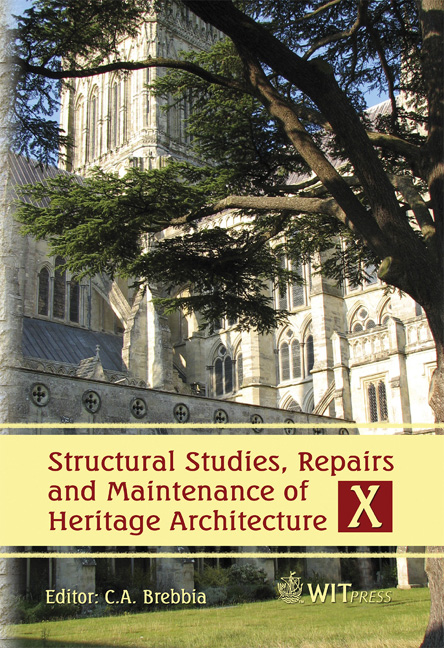A Non-local Anisotropic Damage Model For Brittle Materials
Price
Free (open access)
Transaction
Volume
95
Pages
10
Published
2007
Size
995 kb
Paper DOI
10.2495/STR070471
Copyright
WIT Press
Author(s)
M. A. Ramalho, E. Papa & A. Taliercio
Abstract
A non-local damage model is proposed for brittle materials, such as masonry and concrete, starting from a previous proposal of the authors. The model is characterized by symmetric, second order damage tensors, which account for strain-induced anisotropy. Different laws are employed to describe the evolution of damage induced by tensile or compressive strains. The principal directions of damage remain fixed throughout any load history, and a non-rotating smeared crack model is obtained. The model overcomes some deficiencies of the previous local version, as damage at any point is computed according to the strain averaged over a suitable neighbourhood of that point, thus alleviating meshdependency effects. The model is successfully applied to the analysis of threeleaf walls tested to failure under different load conditions. Keywords: masonry, concrete, non-local damage, anisotropy, mesh sensitivity. 1 Introduction The mechanical behaviour of most engineering rocklike materials, such as concrete and masonry, is basically brittle and is characterized by strain-softening in the post-peak regime; this is especially true as far as the tensile behaviour is concerned. Strain-softening is the macroscopic manifestation of the microfracturing process that any material element experiences under increasing deformation. Microcrack coalescence leads to formation of macrocracks, and eventually failure of the material element occurs. Fracture mechanics and
Keywords
masonry, concrete, non-local damage, anisotropy, mesh sensitivity.




